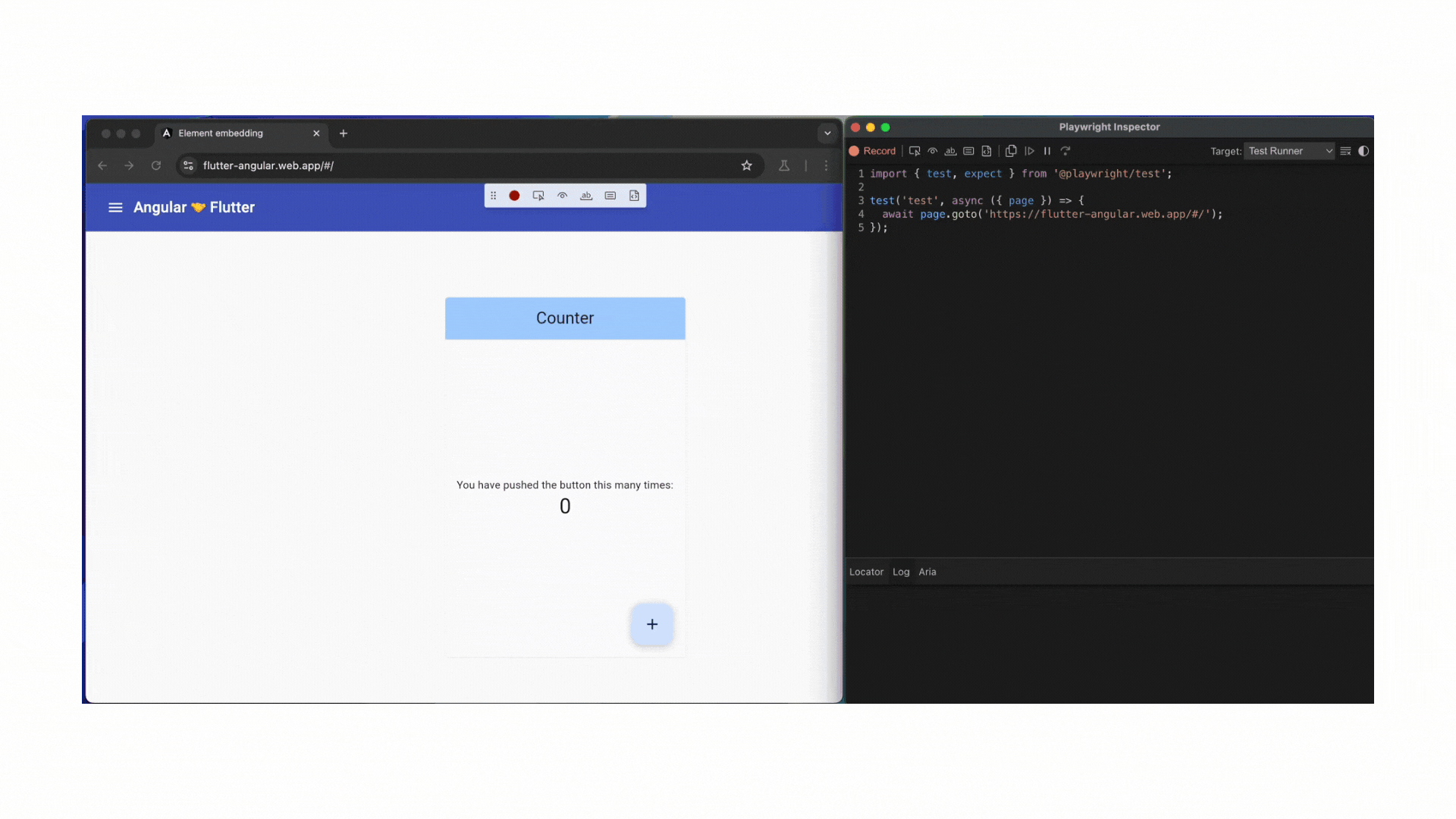Reliable Flutter Web Automation Without Image-Based Hacks
Automating Flutter Web applications is no easy feat—especially when you're trying to use traditional tools like Selenium or Playwright. While many articles introduce the importance of testing Flutter Web, they often fall short of answering the core question:
How do you actually perform reliable, scalable test automation for Flutter Web applications?
Why Is Flutter Web Test Automation So Hard?
Flutter is an open-source UI software development kit created by Google. It is used to develop cross platform applications for Android, iOS, Linux, Mac, Windows, Google Fuchsia, Web platform, and the web from a single codebase.
When a web application is built using flutter, it gets rendered in 2 ways -
- HTML renderer (In mobile devices)
- CanvasKit render (On desktop browsers)
Here's the catch:
When rendered using CanvasKit, the entire UI is drawn inside a <canvas> element. That means there's no usable HTML DOM structure for testing tools to latch onto.

Why Selenium and Playwright Fall Short for Flutter Web
The elements in the flutter web app are rendered within the canvas, making it difficult to access the individual html components. Selenium and Playwright depend on UI elements being present and rendered in the DOM, as they use browser drivers to interact with and perform actions on those elements.
Traditional tools can't “see” the buttons, inputs, or text fields in flutter apps.
Take this example app: https://flutter-angular.web.app/#/
When recording a test using Playwright’s recorder, you’ll notice:
- All actions point to the canvas, not individual UI elements
- The test script doesn’t capture the UI semantics
- Assertions become almost impossible without image workarounds

Many articles and blogs suggest using image based automation for flutter web applications - but is this scalable?
What is image based automation?
Image based test automation is an automation technique where
- the tool takes screenshots of the application,
- identifies components in the image
- computes the coordinates of these components
- performs clicks and other actions on the application based on these coordinates
What are the disadvantages of using image based automation?
- ❌ Coordinate-based clicks are flaky across screen sizes
- ❌ Cross-browser testing becomes unreliable
- ❌ Slow execution due to image processing overhead
- ❌ Hard to debug failures, especially with dynamic content
- ❌ Expensive compute cost with large-scale test suites
Introducing a Better Way to Automate Flutter Web: DevAssure
At DevAssure, we’ve solved this problem with a purpose-built AI-driven test recorder for Flutter Web.
No images. No canvas hacks. No fragile scripts.
Check out this video to see how seamless test automation is with DevAssure's recorder.
Why DevAssure Works for Flutter Web
- ✅ Identifies locators uniquely using advanced heuristics, not image pixels
- ✅ Supports full-page flows without relying on screenshots or canvas coordinates
- ✅ Built-in visual regression libraries to validate layout and UX
- ✅ Faster test execution with reusable test steps and smart selectors
- ✅ Cross-browser compatible and scalable for large teams
🚀 Whether you’re testing in India, the US, or globally, DevAssure ensures consistency across platforms and geographies.
Book a Demo: Automate Flutter Web Apps the Right Way
🚀 See how DevAssure accelerates test automation, improves coverage, and reduces QA effort.
Ready to transform your testing process?
